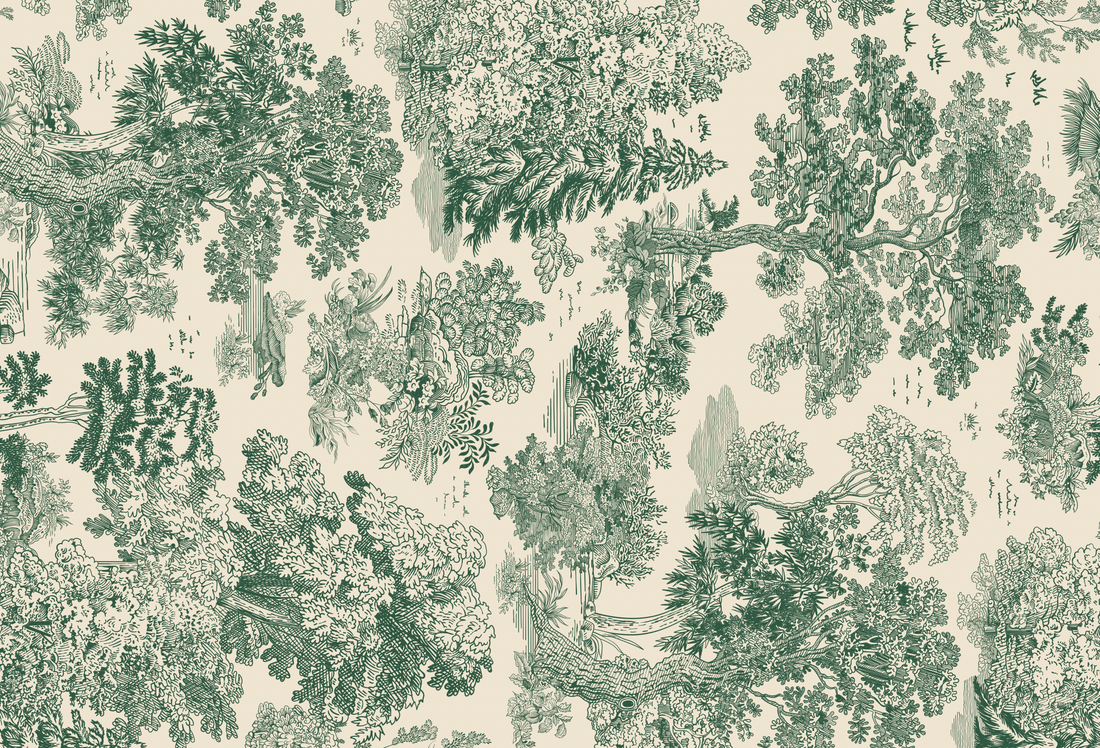
Toile de Jouy: A Timeless Pattern
Share
It’s THE Maison Athlē bestseller: the Toile de Jouy printed Pilates and Yoga mat!
I've been a long time fan of this pattern, reminding me of a "boutis" that my grandmother loved ❤️
I knew I would make a rug out of it, right from the creation of Maison Athlē. Here is a brief history of this much-loved pattern:
Toile de Jouy is named after the town of Jouy-en-Josas, located in the Yvelines department, near Paris. It was there that in 1760, a textile manufacturer named Christophe-Philippe Oberkampf founded the famous Jouy factory. There he produced printed fabrics of exceptional quality, the pattern of which caused a sensation in France and beyond.
Originally, Toile de Jouy was distinguished by its monochrome print, often in blue, red or black, on a white or cream background. This pattern, which generally represents bucolic scenes, rural landscapes, historical figures or mythological stories, is elegantly repeated on the fabric, creating an impression of continuity and movement.
Characteristics of the Toile de Jouy pattern
One of the essential characteristics of Toile de Jouy is its detailed and refined designs. Unlike the simpler printed fabrics of the time, Toile de Jouy features very elaborate compositions, where each scene seems to tell a story. The patterns are often inspired by nature, scenes of rural life, or ancient history, but also sometimes by orientalism, exotic scenes or even mythological figures.
These prints are made using a canvas printing technique, usually using copper or engraved wood, which allows for the creation of complex and precise patterns. The first Toiles de Jouy were particularly popular with the nobility and aristocracy, who sought fabrics that were both elegant and sophisticated.
The Success of Toile de Jouy in the 18th Century
Toile de Jouy was a huge success at the court of Louis XVI and beyond, marking a turning point in the history of fashion and interior design. This exceptional fabric was used for curtains, bedspreads, armchairs, clothing, and even to cover everyday objects, bringing a touch of elegance to all aspects of bourgeois life.
At the beginning of the 19th century, after the French Revolution, the production of Toile de Jouy experienced a certain decline, particularly due to the rise of the mechanical textile industry. However, the charm of Toile de Jouy remained intact, and the pattern has crossed the ages to return to the decorations of more modern interiors.
Toile de Jouy is much more than just a print: it is a true icon of French textile heritage. Through its patterns, it continues to transport its admirers on a journey between history, art and elegance. Today, its influence remains present and manifests itself in various forms, proving that this classic pattern has not aged a day. Timeless, refined and always so modern, Toile de Jouy retains its aura of luxury and beauty in the world of decoration and fashion.
